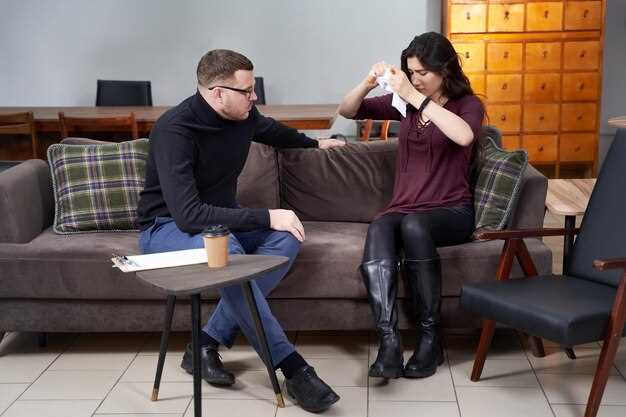Pierwszy, use one clear headshot plus two candid images: profiles that have three photos show an average increase in responses based on previous analysis from lendingtree and a certified sociologist; match rate tends to increase when personalities are present throughout imagery and copy. Keep your bio concise: aim for 120–160 characters to increase clarity.
Lead copy toward specific characteristics: list hobbies that reflect attraction triggers while avoiding vague claims; profiles that have “I can cook” used as a joke wont convince someone seeking long-term partnership and often leave potential matches unsure of intentions. Swap generic lines for concrete examples of skill or routine to show reliability.
Let photos show subjects themselves in familiar settings so viewers can assess real-life attractiveness rather than staged polish; honest captions that really explain context increase trust and encourage fuller responses from people who have matching long-term goals. Include one short note about a certified skill or previous project to lend credibility.
Practical breakdown of the Ick trait and 17 detail ideas to include
Recommendation: remove vague bragging and replace with 17 concrete details that reduce ick by clarifying values, habits, and boundaries.
Quick summary: include a short hook, a one-line overall vibe, city for logistics, and a thorough mini-report that shows which activities matter most. Avoid long talking points about previous partners; instead publish sentiment-based notes on family, religion if relevant, travel preferences, and social habits. Good detail helps attraction by showing foundation values and allowing better matchmaking in context.
- Hook: one clear sentence that sets tone (funny, earnest, curious) and explains what you like to spend time doing.
- One-line overall vibe: concise label such as “outdoorsy professional” or “bookish event planner” to reduce misreadings.
- City mention: list current city and willingness to travel or relocate; ensures match logistics match expectations.
- Morning routine snapshot: 2 items (coffee type, workout or reading) that show daily rhythm without oversharing.
- Weekend example: one specific plan that shows how much free time you have and what you prioritize.
- Social pattern: describe preferred group size and frequency of nights out versus nights in to avoid surprises.
- Values signal: 3 words that capture core values (honesty, curiosity, generosity) with one short example.
- Family context: willingness to spend holidays with family, general family size, and role family plays in life.
- Religion note: concise label or “none” with a line about how it affects dating and child plans if relevant.
- Travel style: rate from 1–5 for adventure versus comfort and list two recent destinations or future targets.
- Career snapshot: role, industry, and one non-work passion that keeps life balanced; avoids resume copy-paste.
- Red-flag boundaries: one sentence about dealbreakers in terms of smoking, pets, or time spent on screens.
- Previous relationship summary: two-line factual report about what was learned, phrased without blame and with less emotional detail.
- Attraction triggers: list two traits that attract you (intellect, humor, kindness) and one behavior that turns you off.
- Practical logistics: driving ability, kids preference, and willingness to match on datemyage if relevant.
- Conversation starters: three specific questions you enjoy being asked; helps move from liking to talking.
- Matchmaking signals: mention one membership or published piece that reflects values or social causes you spend time on.
- Compare honesty levels: if two answers seem similar, choose phrasing that reports intent rather than boasting; much difference comes from tone.
- Ensure clarity by avoiding vague lists; concrete things help people see fit quickly.
- When theyve asked about kids, respond with clear terms rather than generic “maybe”.
- Use metrics sparingly (hours per week, number of trips per year) to allow direct comparisons with potential matches.
- Context matters: small details about etiquette, tipping, or preferred conversation topics can prevent early ick.
Final note: less fluff and more specific, verifiable details improve sentiment and reduce mismatches; good profiles focus on helping others decide quickly while portraying authentic attraction signals.
Identify the Ick: the trait 70% of users dislike in bios
Cut list-format bios; craft one specific hook that prompts member reading to stop and reach out.
Majority of respondents label listy, braggy bios as source of icks; when they face canned jokes or copy-paste lines, interest drops, saying “insert hobby here” signals low effort.
Action steps: review for errors, remove filler space, ensure form fits 300-character limit, beyond lists focus on showing one small scene likely to impress and create desire; small things like punctuation and emoji placement matter.
Use editing services or quick reads like theskimm as model; follow trombetti advice: replace generic jokes with a concrete moment that takes readers within daily life temple.
Short checklist: remove brag lines about money or face shots; swap catchphrases for detail about habits; proofread before downloading live bio to correct gery errors and spacing; test whether resulting bio will reach interested people.
Final metric: if theyve read bio twice and still not interested, change hook; always prefer one concrete scene over lists, making tangible difference in who messages and who skips.
Interpret the Ick in photos and prompts: what to avoid
Pick one solo headshot with natural light; low-effort group shots, heavy filters, or cropped faces reduce match chances.
If image doesnt show face clearly, replace before submitting; quick review by a trusted member will catch poor framing and odd shadows.
Keep prompts concise and specific: answer as an individual, not in form responses that sound rehearsed; practice short edits until sense is crisp.
Avoid brag lists about exclusive possessions or work titles; having flashy props to beat competition signals insecurity more than value.
spend 30 minutes on mini photoshoot, or hire professional if budget allows; resnick notes photographers who interned at agencies often train framing that prevents stiff, staged looks.
Before submitting photos or prompts, quick peer review helps: ask a friend, jessie, to flag poor captions, awkward poses, or something that makes readers lose sense of authenticity.
Avoid any line that reads like a checklist member would copy; showing effort in one unique image allows better connections and increases chances to match real interest.
Stop thinking that long, clever answers outperform concise, honest lines; having clear details about hobbies, boundaries, and quirks improves review by potential matches.
If nownot ready for studio, pick natural outdoor candid; prompts should focus on details that make anecdotes yours. resnick article recommends one quick peer review before submitting.
Red-flag bio examples vs. positive rewrites
Recommendation: Replace vague negativity with concise, specific habits or goals that signal compatibility and boost attraction.
Red-flag: “No drama, dont contact if you play games.” Positive rewrite: “Prefer clear communication; weekdays free for evening walks, weekends for hiking trips that boost mood and health.” (uses doesnt/doesnt alternative: doesnt tolerate games)
Red-flag: “Only into younger people, no older partners.” Positive rewrite: “Open to partners from 28 to 45; curious about how age shapes style, goals, sleep habits, status updates and shared routines.”
Red-flag: “If you like social media fame, swipe left.” Positive rewrite: “Enjoys balanced media use; happy to trade story highlights for slow mornings, solid sleep and real conversation throughout days off.”
Red-flag: “Dont text back? Dont bother.” Positive rewrite: “Appreciate timely replies; short note that youre busy is fine – helps set expectations between matches.”
Red-flag: “Not here for relationships, just hookups.” Positive rewrite: “Open to short trips or longer connections; looking for mutual respect, consent and clear boundaries that mean emotional safety.”
Red-flag: “My ex ruined everything, dont ask.” Positive rewrite: “Learned from past history; prefer partners who share growth mindset, can talk about boundaries and what theyre looking for.”
Red-flag: “I hate kids, dont want family.” Positive rewrite: “No plans for parenthood right now; keen to discuss lifestyle choices, travel goals and where relationship priorities sit.”
Red-flag: “Gym selfies only, coach vibes.” Positive rewrite: “Former coach who values fitness, but also nerdy weekends; balance between activity and chill is attractive to me.”
Red-flag: “Looking for drama, spicy messages welcome.” Positive rewrite: “Enjoy playful banter with emotional clarity; likes that signal attraction without creating confusion or burnout.”
Red-flag: “Status matters, judge by bank, job, car.” Positive rewrite: “Value kindness, curiosity and steady habits; career status less important than how someone treats friends and family.”
Red-flag: “No bios, just photos.” Positive rewrite: “Short bio with three concrete likes: morning coffee, indie music, weekend hikes – gives clear shot at conversation starters.”
Red-flag: “My profile is perfect, dont bother improving.” Positive rewrite: “Bio updated every few days to keep info fresh; recent addition: favorite local trail for trip ideas.”
Red-flag: “If youre insecure, dont message.” Positive rewrite: “Prefer emotional maturity over perfection; many people have history that shaped them, reason to listen rather than judge.”
Red-flag: “I sleep a lot, laziness is me.” Positive rewrite: “Prioritize sleep and recovery for health; balance work, rest and fun throughout week.”
Red-flag: “Likes: alcohol, clubbing, drama.” Positive rewrite: “Likes: craft coffee, low-key bars, creative nights in – clearer selection that attracts similar tastes.”
Red-flag: “Im not your therapist.” Positive rewrite: “Happy to support a partner; boundaries matter so care stays mutual, not one-sided.”
Red-flag: “No bios, personality left to chance.” Positive rewrite: “Two-line snapshot plus one anecdote from recent trip creates instant context and gives reason to start chat.”
Action plan: rewrite your bio in minutes
Rewrite bio in under 8 minutes using a focused 3-step methodology: trim copy to 120–160 characters, insert one concrete scene plus one playful CTA, test two variants across two weeks.
Trim: remove lists and filler that reduce chances to attract matches. Limit sentences to two short lines; cut phrases that cause overthinking. Keep one concrete detail (winter hike, kitchen experiment, staff role), one identity tag (writer, photographer) and one line that makes readers smile.
Scene + CTA: swap previous generic lines for a single micro-story that shows desire for shared experiences. Example: “started a Saturday adventure into coastal rocks in winter; making playlists for rainy drives.” End with a question or prompt that invites replies, not jokes overload – perhaps “what’s your worst campfire song?” If unsure which tone fits, keep voice curious rather than defensive.
Test: create three variants and run A/B for two weeks each; track matches per 100 views and response rate. Change only one element between versions (voice, CTA, concrete detail). If third variant actually improves replies, adopt that structure; if not, revert to best performer from previous round. This method allows clear comparison and faster improvement.
Templates to personalize: “Weekend adventurer into hidden cafes, making playlists for rainy days – ask about my top winter song.” “Remote writer who loves bad puns and proper pancakes; swap recipes or jokes.” “Rocking outdoor staff who climbs on weekends; become my partner for awkward karaoke.” Avoid theskimm-style bullet lists; focus on creating one vivid image, one short CTA, one measurable goal for each edit.
The 17 concrete details to include that outshine generic lines
Lead with three precise facts that will outscore one-liners: neighborhood, exact title, weekend ritual.
| 1 | Neighborhood plus commute time in minutes (example: 15 minutes walk); helps set realistic meet-up range. |
| 2 | Exact title and company name; note years worked and any role you interned at to show career path. |
| 3 | Concise career history: three employers, core responsibilities, one measurable result per role. |
| 4 | Primary hobby with frequency (run 30 minutes five times weekly); avoid vague habits. |
| 5 | Recent project example that shows skill: one-sentence description, outcome, timeline. |
| 6 | nownot marker for availability (example: “nownot Fridays”); use instead of long availability paragraphs. |
| 7 | One clear value statement: kind acts you do regularly and a good boundary you uphold. |
| 8 | Specific food preference or favorite cuisine; helps determine early match on date planning. |
| 9 | Photo note: main image into camera with natural smile; additional photos show hobby, full body, candid shot. |
| 10 | Sleep schedule: early riser or night owl; simple label avoids mismatched expectations later. |
| 11 | Live abroad detail or city swap history; mention years spent abroad if applicable to context. |
| 12 | Volunteer role or title you served as (editors, advisor, committee member); include one measurable contribution. |
| 13 | Recent survey reference if relevant: kelleher survey suggests many adults prefer short narratives over lists. |
| 14 | Dealbreakers spelled plainly: cant tolerate smoking, never date liars, nobody allowed to ghost; recipients will appreciate clarity. |
| 15 | Small brag: one achievement that is yours alone and shows character rather than status. |
| 16 | Version note and update cadence: state last edited date so matches reflect recent info and themselves stay current. |
| 17 | Call to action: low-effort question under 15 words that will determine interest and invite short replies below. |
Use your first 60 seconds of bio to ensure readers receive clear signals: replace generic phrases with these concrete items, ask one specific question, and edit out vague opinion lines that cant be verified.


 What Makes the Perfect Dating Profile? 70% of App Users Say This Trait Gives Them the Ick">
What Makes the Perfect Dating Profile? 70% of App Users Say This Trait Gives Them the Ick">



 How Not to Blow It on a First Date at a Bar or Restaurant – Practical Tips to Impress">
How Not to Blow It on a First Date at a Bar or Restaurant – Practical Tips to Impress">
 How to Deal with Trust Issues and Insecurities in Relationships – 6 Steps to Repair from a Couples Therapist">
How to Deal with Trust Issues and Insecurities in Relationships – 6 Steps to Repair from a Couples Therapist">
 4 Reasons You’re Choosing the Wrong Dating Photos and How to Fix Them">
4 Reasons You’re Choosing the Wrong Dating Photos and How to Fix Them">
 I Spent 48 Hours on a Celebrity Dating App – What I Learned">
I Spent 48 Hours on a Celebrity Dating App – What I Learned">
 Stop Overthinking Romantic Relationships – A Practical Guide">
Stop Overthinking Romantic Relationships – A Practical Guide">
 How to Have More Meaningful Conversations – Tips for Deeper Connections">
How to Have More Meaningful Conversations – Tips for Deeper Connections">
 What to Do When Your Boyfriend Ignores You in a Long-Distance Relationship – Practical Communication Tips and Rebuilding Your Connection">
What to Do When Your Boyfriend Ignores You in a Long-Distance Relationship – Practical Communication Tips and Rebuilding Your Connection">
 Eight Signs You’re in an Unhappy Relationship – How to Tell and What to Do">
Eight Signs You’re in an Unhappy Relationship – How to Tell and What to Do">
 How to Be a Supportive Partner – Practical Tips for a Stronger Relationship">
How to Be a Supportive Partner – Practical Tips for a Stronger Relationship">
 How to Get a Guy to Call You in 3 Simple Steps | Quick Dating Tips">
How to Get a Guy to Call You in 3 Simple Steps | Quick Dating Tips">